Best full-face MTB helmets – we test the ultimate helmets for downhill and enduro protection
MTB full-face helmets provide the highest level of safety when riding gnarly terrain. Check out our tried and tested recommendations
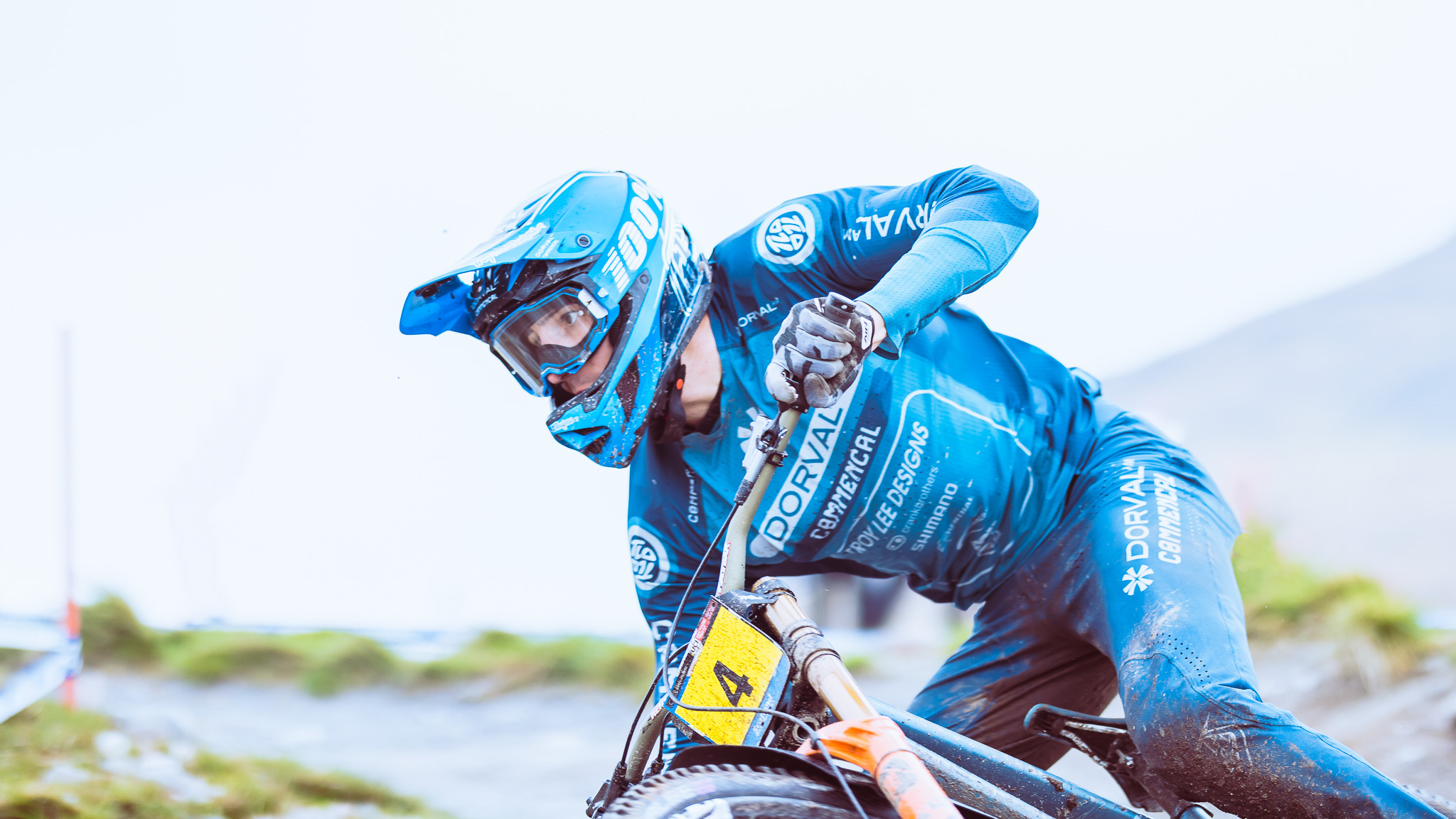
The best full-face helmets are a mandatory piece of equipment for riding or racing downhill. A full-face is the most protective type of mountain bike helmet and will keep you safer from inevitable crashes. The increased coverage of the chin bar and improvements in structural integrity as well as manufacturers introducing their specific patented safety technology, means you have plenty of top helmet choices.
Full-face helmets today are also far more comfortable, better ventilated, and generally easier to live with than the more basic models of the past. That said, open face helmets will always enable better ventilation and a wider field of vision.
Full-face mountain bike helmets are no longer exclusively used for downhill mountain biking and are now being chosen as the best enduro helmets for gnarly stages and also e-MTBing where riders need not expend as much energy when winching back to the top of descents.
This has helped grow the market for convertible helmets. These hybrid full-face helmets have a removable chin bar and can be as comfortable as any trail MTB helmet for climbing and general riding, yet still meet the safety certifications required for gravity-based racing when the chin bar is fitted.
Whether you're looking for a one-piece helmet or a model with a removable chin bar, continue scrolling for our picks for the best full-face helmets. After extensive testing, our top full-face helmet overall is the Specialized Gambit, while the best convertible option is the Bell Super DH Spherical. If you're not sure what to look for in a full-face, see the general buying advice in our 'how to choose' section at the bottom of this article.
The quick list
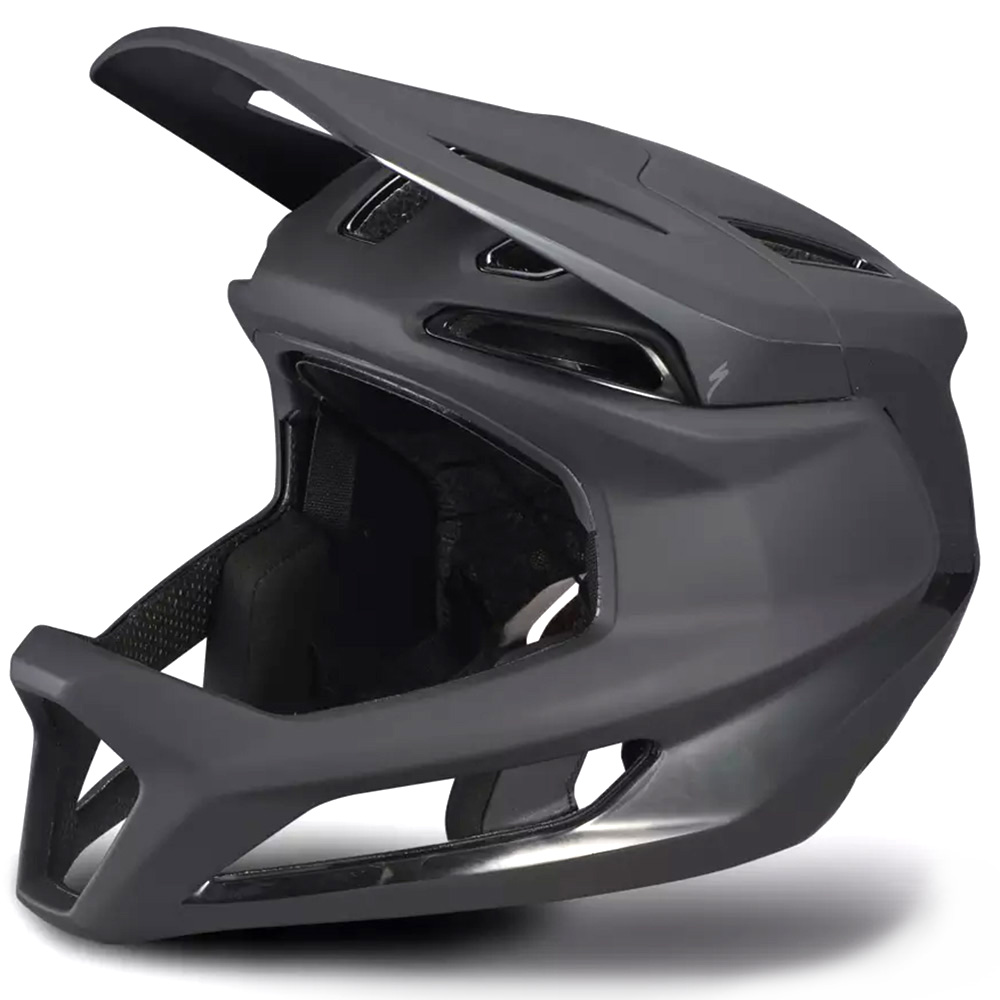
Incredibly light with maximum protection
Delivers complete DH protection while being as just vented and weighing almost the same as an open-face helmet.
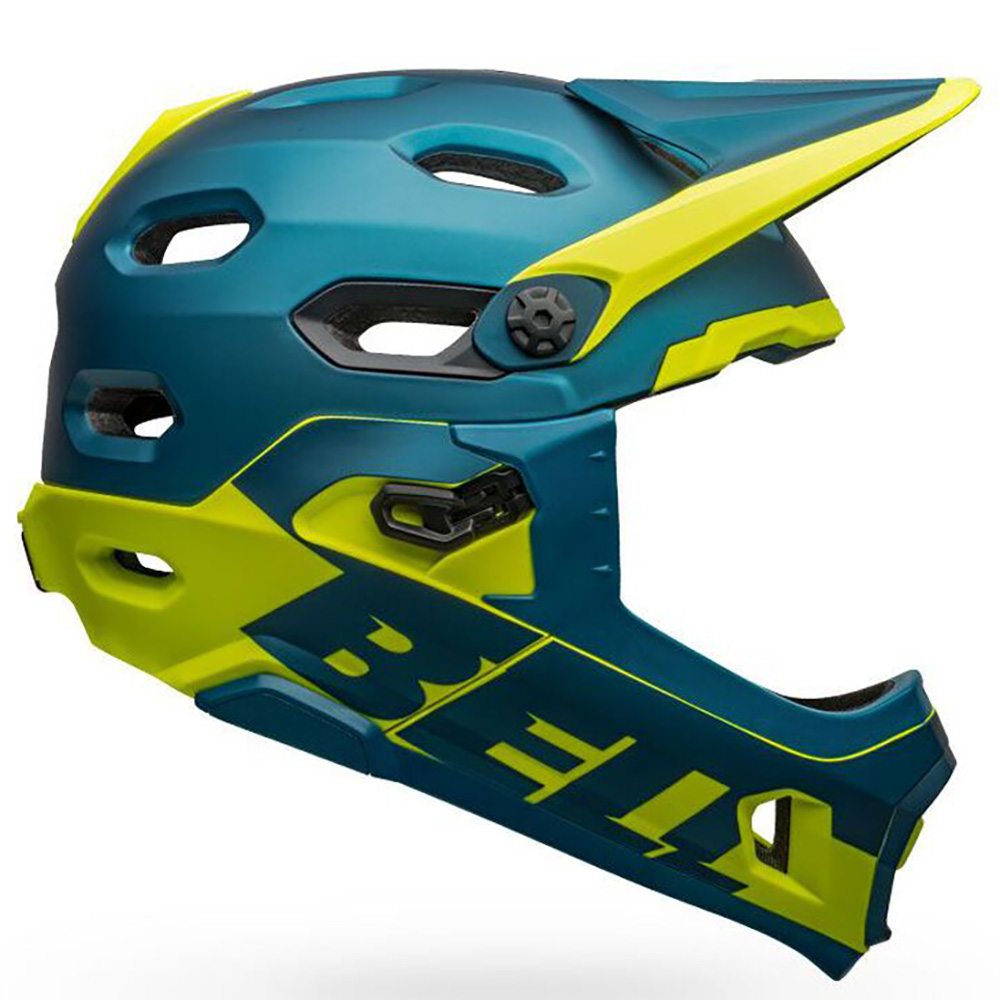
Best helmet with detachable chin bar
A great option for trail, enduro or DH riding/racing as the chin bar is DH certified.
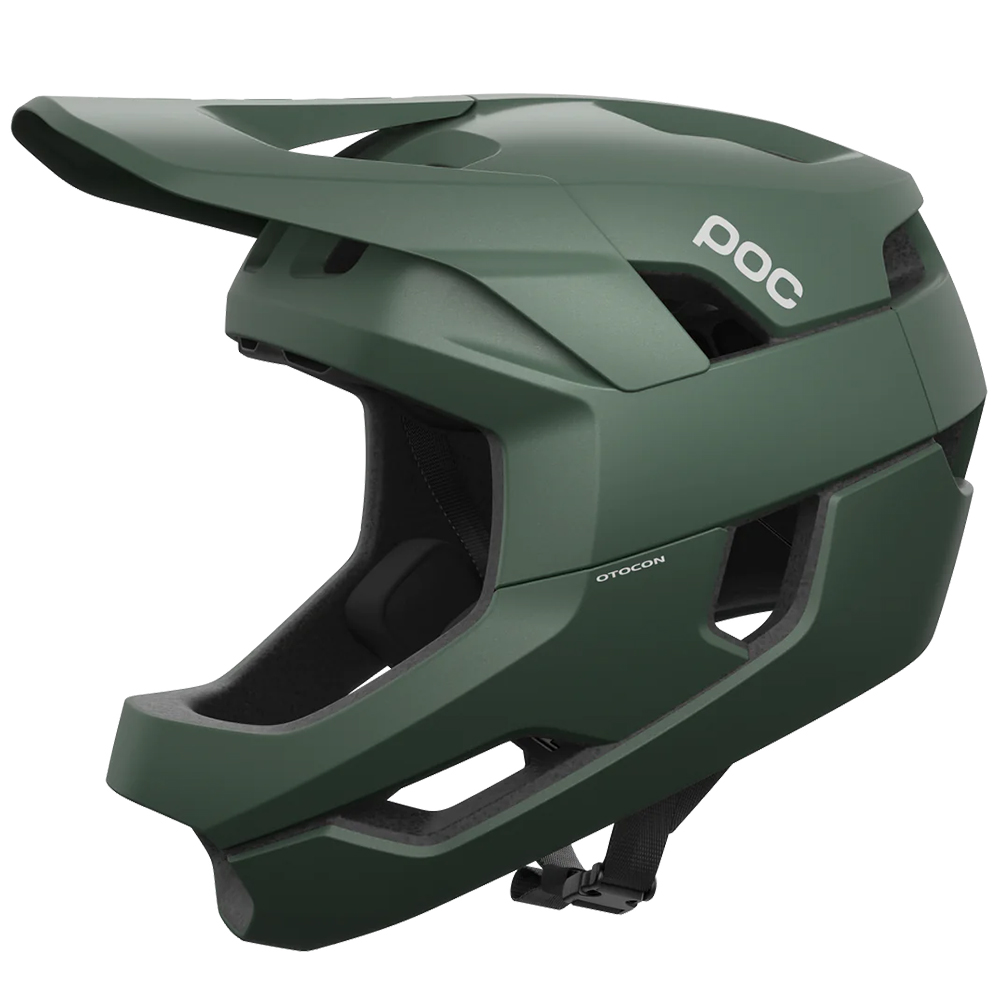
Light and comfortable with great features
Combines road-inspired ventilation and downhill protection for enduro riders.
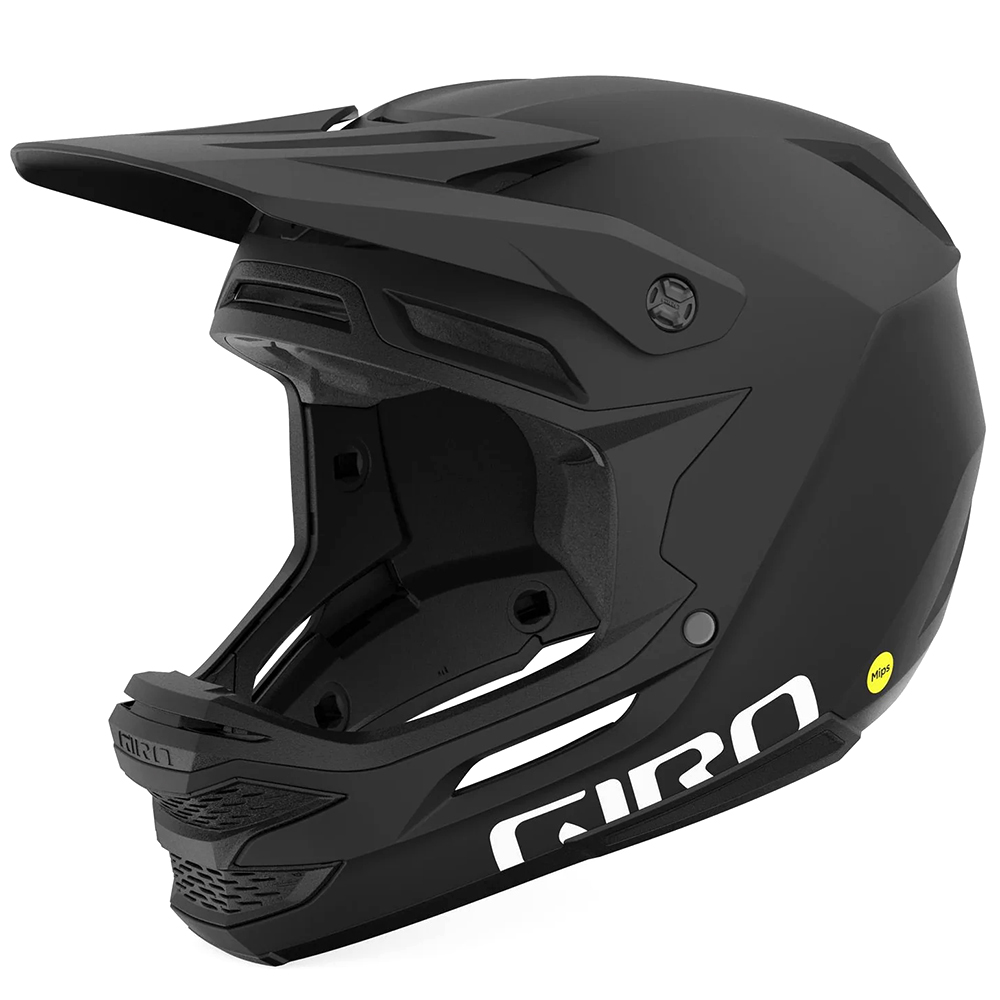
Best full-face for downhillers
Uncompromising protection with Spherical MIPS technology and excellent safety features.
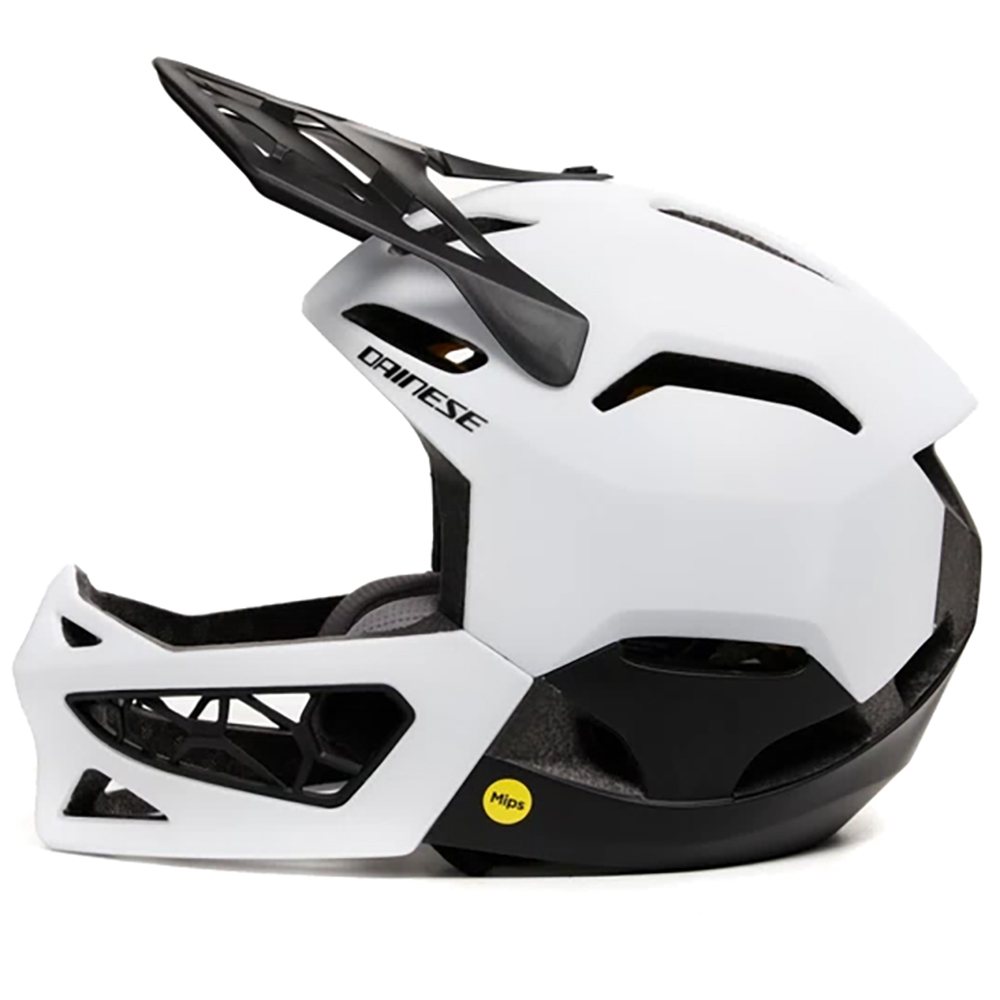
Ultralight, DH-rated, full-face lid
So lightweight, comfortable and well vented, it's suitable for riding in all day.
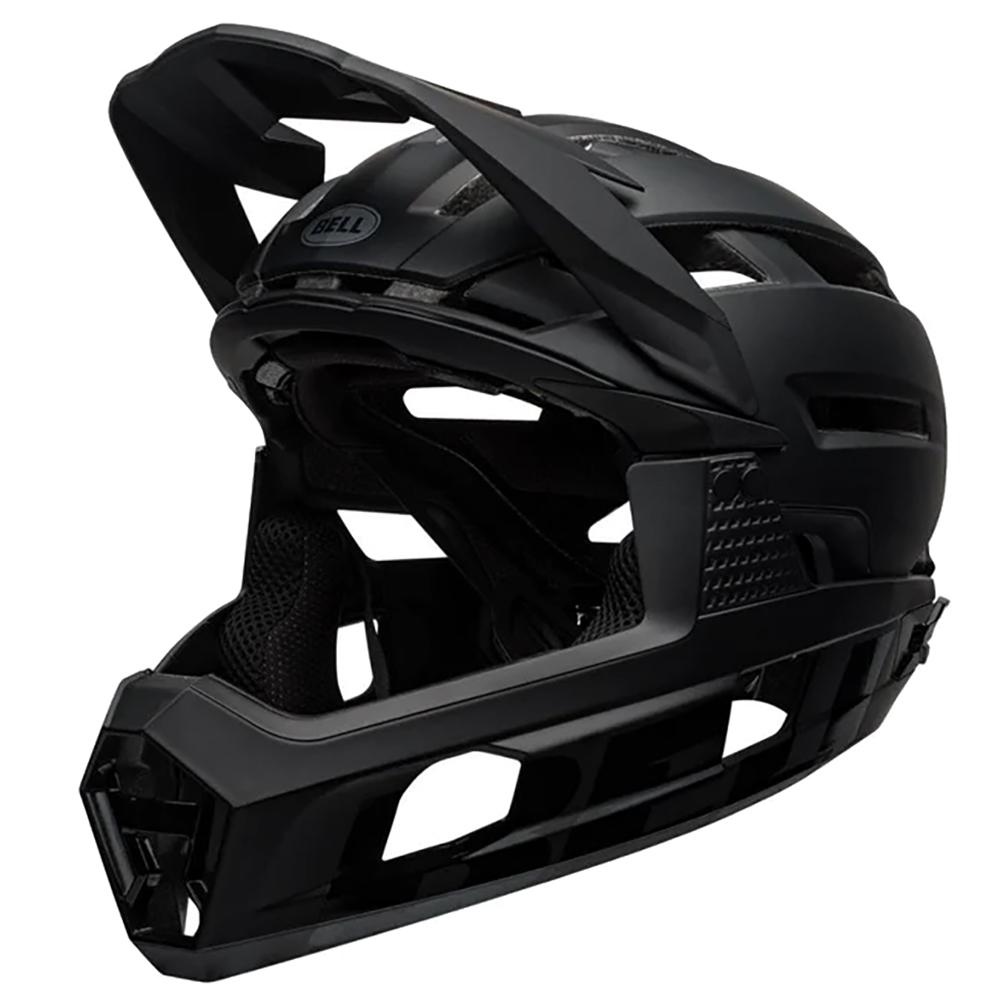
Lightweight convertible full-face lid
Bell's latest evolution of the Super Air R is lighter and features a superior chin-bar attachment system.
See the next 2 helmets ↓
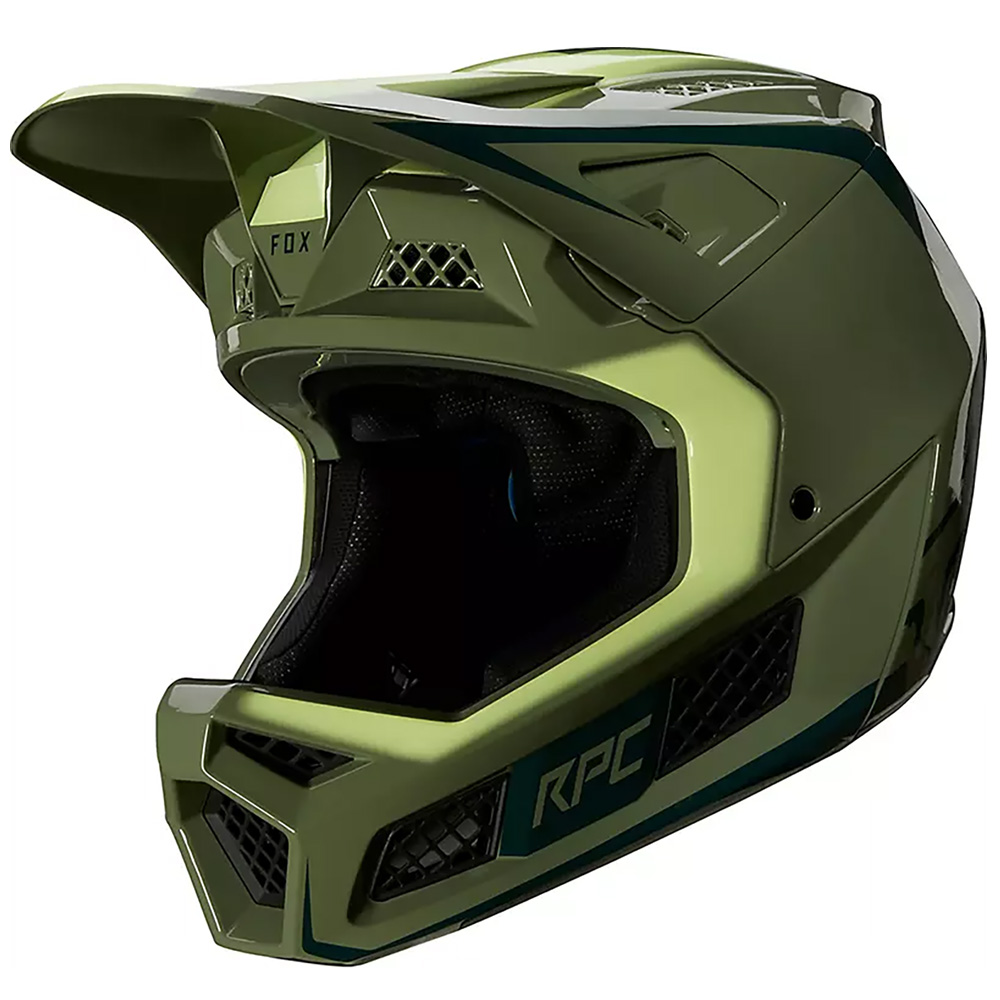
Built to handle the biggest freeride hits
Aggressive looks and stylish coloring, and packed with safety features.
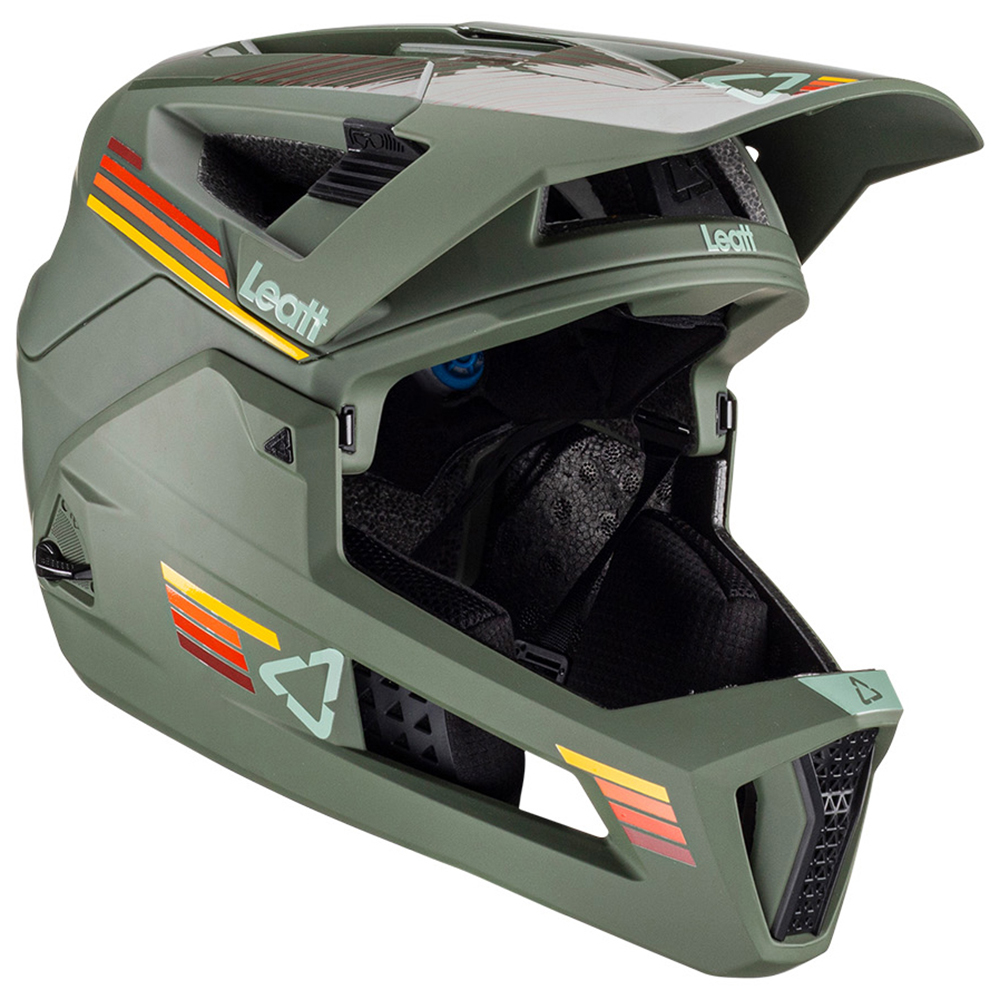
Convertible helmet with full DH safety
Angular and airy, and packed with unique features including a removable mouthpiece in the chin bar.
Best full-face MTB helmets
Why trust BikePerfect
1. Best overall

Specifications
Reasons to buy
Reasons to avoid
The Specialized's Gambit is a super lightweight full-face helmet that delivers full ASTM downhill protection. It still vents, breathes, and weighs almost the same as an open-face helmet. That means it's our go-to option when the terrain is starting to get a bit spicy and we feel the need for extra protection over a regular trail helmet.
Despite the low weight and maxed out ventilation, Specialized has still managed to achieve a full DH safety certification and it is further kitted out with a MIPS SL liner for protection against rotational forces. The interior doesn't look luxurious with its minimal padding, but the pads are well-positioned.
The peak is fixed in quite an upright position which is either a positive for goggle storage and style points or a negative if you're looking for protection from the weather.
The helmet is also compatible with the Specialized ANGi crash sensor (an additional extra), for peace of mind when riding solo.
Reviewer Guy Kesteven summed up the helmet: "Full-face DH protection with the weight and fresh air flow of an open face lid puts Specialized’s Gambit at the top of our premium enduro helmet rankings in terms of protection and all day comfort."
Read more on why the Specialized Gambit full-face helmet is one of our favorite full-face helmets in our full review.
2. Best convertible
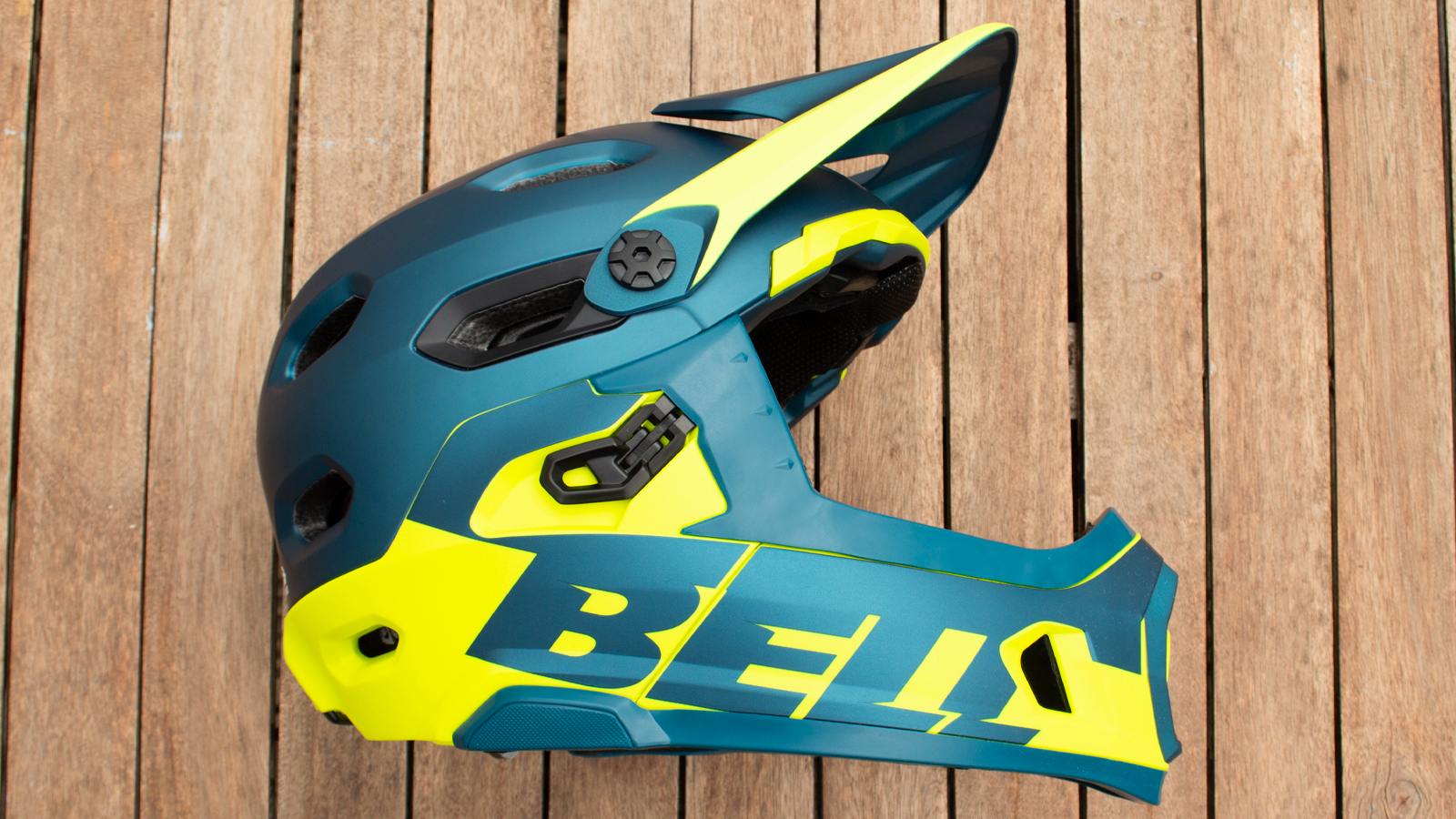
Bell Super DH Spherical
Specifications
Reasons to buy
Reasons to avoid
Bell was one of the companies that pioneered detachable chin bar technology, so it's only fitting to include it on this list.
The Super DH Spherical is very similar to the Bell Super Air Spherical open face helmet, but comes with a detachable chin bar. It's a great option for trail, enduro or DH riding/racing as the chin bar is DH certified – unlike the lighter Super Air R MIPS.
Removing or adding the chin bar involves operating three clips – one on each side and another one at the rear. When locked into place, we found the chin bar to be totally sturdy and free from any movement during out tests.
Air intake vents are located over the brows and pass it through the helmet to keep you cooler. There's storage for both goggles or glasses available below the visor. Our medium test sample weighed in at 897g, which is heavier than the claimed 860g but still reasonable for a DH certified lid. The Super DH comes with two sets of cheek pads in different thicknesses to help you dial in the fit when running as a full-face.
3. Best enduro-specific
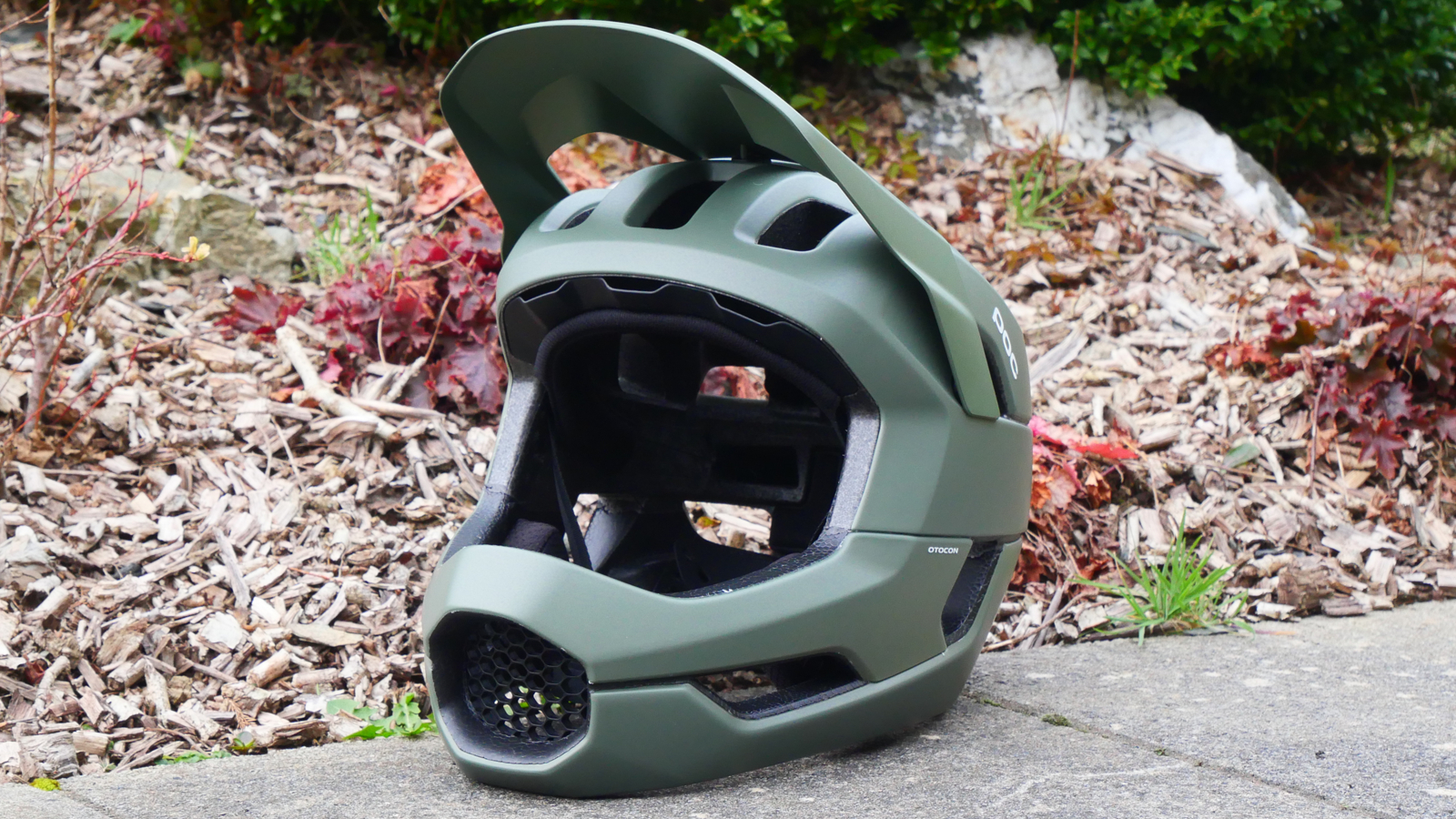
Specifications
Reasons to buy
Reasons to avoid
The POC Otocon is available in two different options, the feature-packed Otocon Race Mips, and a less expensive, but lighter, standard option. Both models feature the same EPP/EPS dual-density shell, ventilation, POC's Race Lock head retention, and breakaway peak spec.
The Otocon Race MIPS uses two different liner materials that are optimized for function and protection – the upper zone is constructed from EPS foam and the lower zone is made from EPP. POC says the transition between EPP and EPS adds strength and stability.
Aramid bridges (thin finger-like portions of very strong, woven material) are molded to the helmet liner, again, to improve structural stability and increase penetration protection.
POC has included extra smart features in addition to structural safety. The Otocon has an NFC Medical ID built in. By recording a rider's medical history and emergency contact information in the helmet and making it accessible to other riders, medical personnel, and first responders, according to POC, this promotes user safety and protection.
In his review, Graham Cottingham said, "the Otocon does a great job of feeling just like any of the trail helmets that I usually wear. Secure retention, low weight, and airy channeling mean it can be easy to forget you are wearing a full-face which is a real win considering it comes rated with ASTM F1952 Downhill levels of protection."
For more details on how the POC Otocon performed at Dyfi Bike Park, check out our hands-on review.
4. Best DH-specific

Specifications
Reasons to buy
Reasons to avoid
Giro says its Insurgent Spherical helmet is designed to deliver protection and comfort for top gravity riders. Build quality is excellent – the outer shell uses a durable polycarbonate material and inside it has an EPS foam liner – and the helmet features Spherical MIPS technology, which uses movable internal layers to help take the brunt of any impacts.
The helmet comes with two sets of cheek pads in different thicknesses, which are secured with a directional snap system allowing for easy removal in a crash. It also features a flex gasket along the lower edge which can reduce collarbone impacts.
In our tests we found the Insurgent a good stable fit, the D-Ring fastening felt super secure, and it seats goggles really well. We kept the adjustable visor up at its highest point and visibility was clear. The various safety features were confidence inspiring, so much so that we felt a bit too invincible and ended up having a crash! We are pleased to report that the Insurgent kept us fully protected and unscathed.
Our reviewer Janine Begley concluded: “There is no compromising on safety with this lid and it has its place firmly at the top of my choice of full-faces. With its adjustable visor and integrated camera mount, it also offers added versatility to capture and enhance your riding experiences.”
For more info, check out our full Giro Insurgent Spherical review.
5. Best lightweight
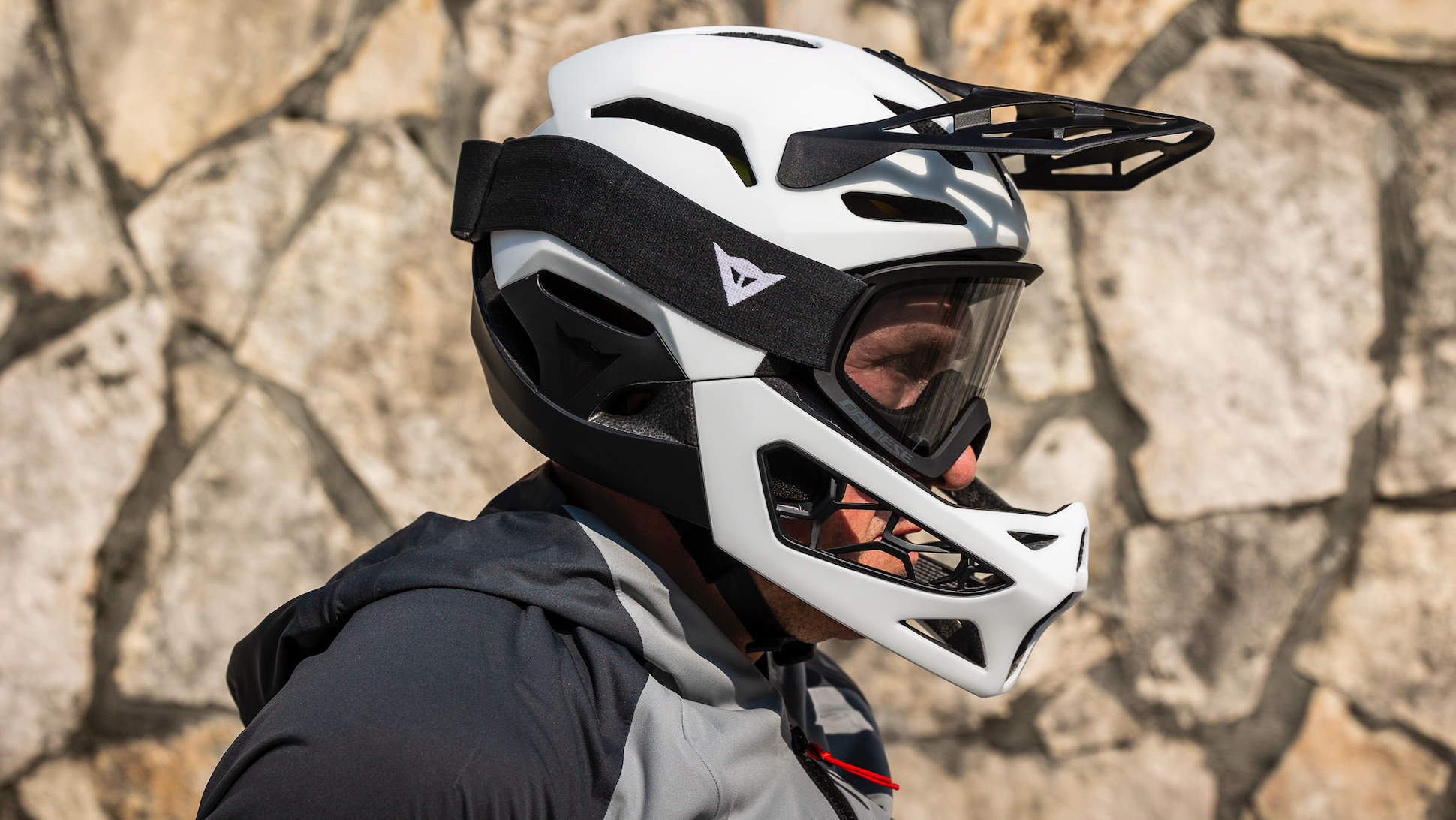
Specifications
Reasons to buy
Reasons to avoid
If you're looking for the lightest full-face helmet they don't come much lighter than the Dainese Linea 01 which according to our scales, weighs in at a feathery 570g for a medium helmet. Dainese has achieved this by using an embedded nylon exoskeleton to improve resistance to penetrating impacts and the overall strength of the EPS layer. The result is less materials being used in the helmet, which means less overall weight.
An alternative way to reduce the amount of material used is to add extra ventilation, and so even when climbing in the heat, we found the Linea 01 fed fresh air onto the head and kept things cool very well. Combine that with the low overall weight and we almost forgot we were actually wearing a full-face helmet.
On the downside, the visor is more decorative than actually protective and while the Linea 01 is DH rated, we would probably prefer the extra reassurance of more heavyweight lid. If you're looking for a lightweight full-face for enduro or e-MTB though, then the Dainese Linea 01 is the top choice.
Our reviewer, Mick Kirkman summed up his test model. "The Dainese Linea 01 MIPS is so lightweight and well vented, it’s suitable for riding in all day (even in warm weather) if you want extra protection for e-biking, enduro or aggressive trail riding. While it’s fully certified, DH racers might still want extra material and less exposed EPS for riding usual uplifts where cooling and weight is less of a priority."
For more details, read our review of the Dainese Linea 01.
6. Best lightweight convertible
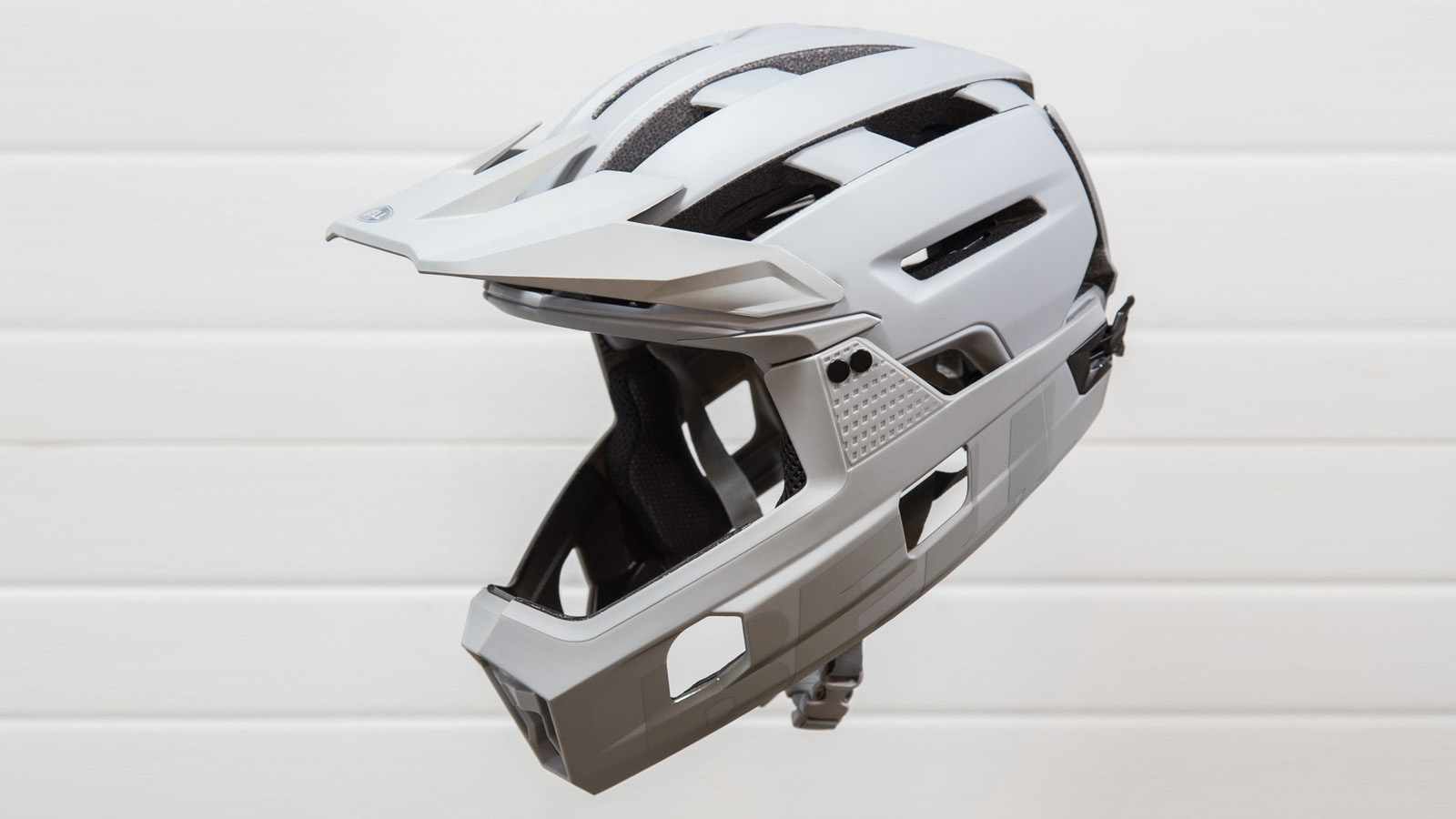
Bell Super Air R MIPS
Specifications
Reasons to buy
Reasons to avoid
The Super Air R MIPS is Bell’s latest-generation convertible full-face helmet and builds on the reputation it established with the original Super 2R, launched five years ago.
A significant redesign and evolution from the 2R and 3R, this Super Air R features a superior chin-bar attachment system with two latches. It also happens to be 144g lighter than the 3R, too. Ventilation is provided by 18 primary structural vents, while four additional ventilation ports are found in the detachable chin bar.
For riders who use goggles with their helmet instead of riding glasses, there is a clever rubber grip pad on the back of the Super Air R, to prevent your goggle strap from slipping.
7. Best lightweight DH
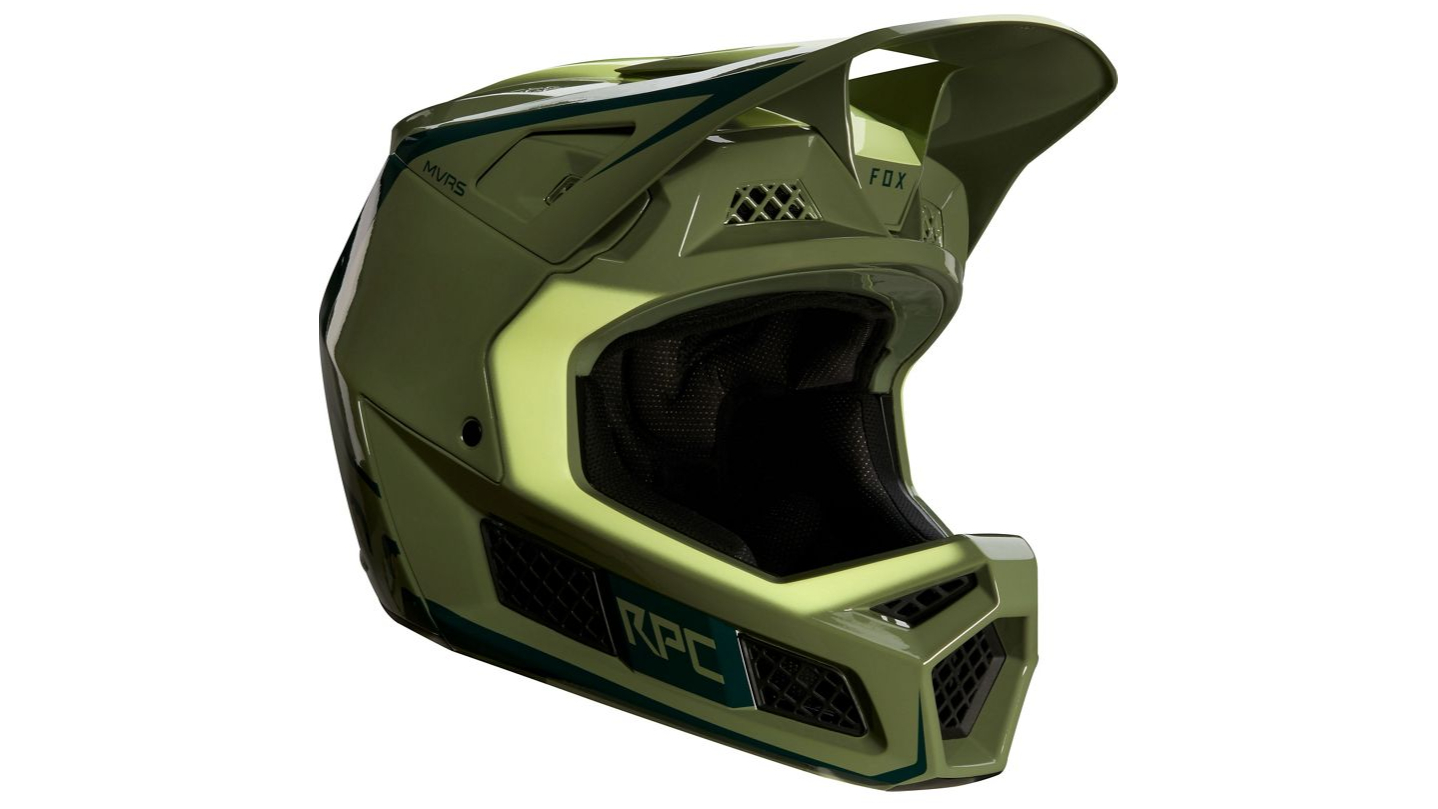
Fox Racing Rampage Carbon
Specifications
Reasons to buy
Reasons to avoid
It doesn't take too much imagination to guess where Fox Racing got the inspiration for the Rampage's name. Red Bull Rampage is the ultimate freeride event with the best bike riders in the world riding down the gnarliest terrain.
Fox claims to have created a helmet that can handle the biggest freeride hits and downhill tracks worthy of the Rampage name, and with aggressive looks and stylish coloring this is one of the nicest looking helmets out there.
There are safety features galore, including liquid-filled Fluid Inside pods designed to protect against linear and rotational impact forces, a dual-density EPS liner and an injection-molded chin bar.
The helmet features two different systems that help mitigate forces from impacting the head. The dual-density Varizorb EPS liner is designed to spread out forces to a larger surface area. Plus, the Magnetic Visor Release System allows the visor to detach from the rest of the helmet.
The Magnetic Visor Release System attaches via magnets so it can easily detach in a crash, although it’s not adjustable,
This carbon helmet is fairly light, but you have to pay top dollar. Luckily, those on a budget can purchase a non-carbon version of the Rampage for a much cheaper price.
8. Best convertible DH
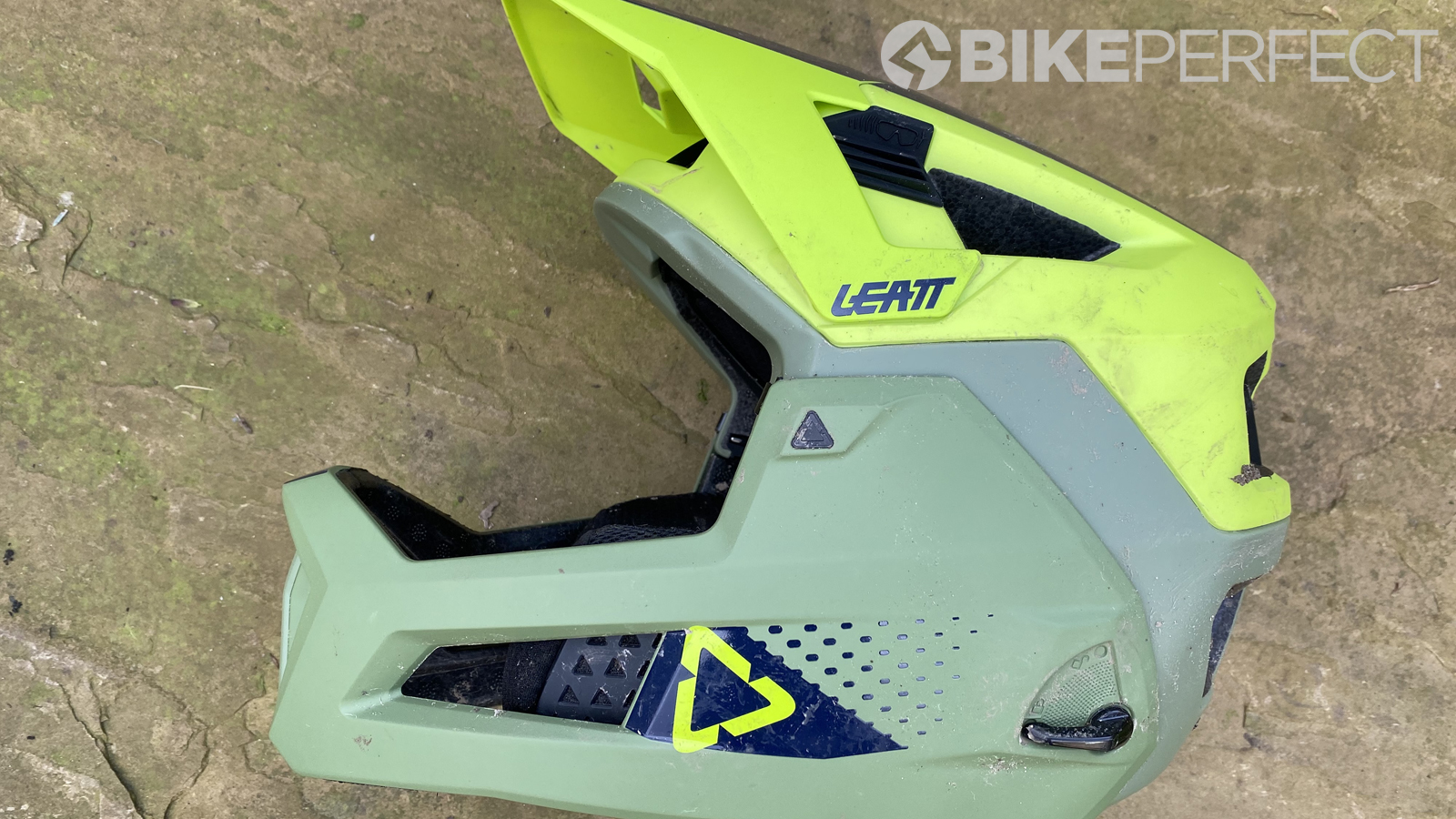
Specifications
Reasons to buy
Reasons to avoid
South African brand Leatt’s 4.0 Enduro features a removable chin guard that meets ASTM DH certification standards. The 4.0 helmet includes a load of smart features including its own brain-saving 360-degree Turbine inserts that reduce both rotation acceleration and concussion-level impact energy to your head and brain.
The demanding nature of modern downhill and enduro tracks has meant the convertible helmet market has become hotly contested, Leatt's offering though is enough to make it one of the best enduro helmets available.
Renowned for its ventilation and comfort, it’s pretty light also, coming in at 810g, and is becoming one of the go-to helmets for enduro riders.
The helmet is packed with unique features, including a removable mouthpiece in the chin bar to increase ventilation. A universal sunglasses dock lets you safely stow your sunglasses under the visor when not in use and the adjustable visor opens up enough to place your goggles underneath, so you don’t have to constantly remove them.
In testing, we found the MTB 4.0 Enduro V21 gave a solid and secure fit, with no creak or rattle to suggest you aren’t wearing a fixed full-face helmet. Protection is top notch while staying nicely light too. Ventilation and acoustics are very good and the buckle and glasses extra features are really nice touches too. The extensive feature list makes the price high, though not unreasonable for the ‘two top class lids in one’ performance you’re getting.
You can read how this helmet earned four out of five stars in our Leatt MTB 4.0 Enduro review.
How to choose the best full-face MTB helmet
Is a full-face helmet safer?
Full-face helmets have their roots in motorcycle riding, where speeds are higher and crash forces are greater than in mountain biking. Because of the similarities between the two sports, gravity-oriented mountain bikers use full-faces to best protect themselves. Downhill riders and racers always use a full-face helmet and, as enduro tracks get more technical, enduro riders often also choose to wear full-faces due to the extra protection.
Many casual riders opt to wear a half-shell helmet, which is what we traditionally think of as what a mountain bike helmet looks like. Half-shell helmets are great for everything from cross-country riding up to enduro riding. However, if you are looking to push yourself on the downhills, a full-face helmet may be warranted. Full-faces protect nearly all of the surface area of your head and face and are increasingly getting lighter and implementing the latest safety technologies, like MIPS.
Are convertible mountain bike helmets good?
In the past few years, helmet manufacturers have designed helmets that cater to riders who want to go fast on the downhills but still want to pedal on the uphills. One of the problems with a traditional full-face helmet is breathability, making things miserable to climb in.
This is where convertible helmets come in. Multiple manufacturers make helmets that allow the chin bar to be removed, so you can ride either in full-face mode or the more breathable half-shell mode. We wouldn't recommend this for riders who spend all day every day at the bike park, but it's a great option for trail and enduro riders who are hooked on gravity.
Even better is the fact some brands are now able to make these convertible helmets to meet DH safety certifications so you know that they will offer the protection that you expect. All you need to do is figure out how to carry the chin piece when you pedal back to the top.
Do full-face MTB helmets get hot?
Helmets that have ample cooling vents, by definition, must contain less surface structure. Those vents also create entry points for debris or curiously angled trail features, such as sticks. For riders who spend most of their season in cooler conditions, ventilation is not an issue and they can afford to opt for helmets that have the highest possible protection rating, with airflow a secondary consideration.
Full-faces have never had great ventilation due to their coverage and extra protection, although this has improved as more enduro riders choose full-faces options as the best enduro helmets. If you live and ride (or plan to vacation) in a warm-weather location, ventilation becomes an issue nearly equal to the protection and this markedly complicates your full-face helmet choice.
Do full-face helmets have other safety features?
Many helmet manufacturers have considered how a helmet can help in the event of a crash beyond simply reducing impact forces on the thread. Many brands now include features such as NFC chips to communicate emergency details to first medical responders or crash sensors and recco beacons. Designers have made chin pads seamless to remove to enable medics and emergency response personnel to easily extricate a helmet from an injured rider.
Like all other helmets, rotational crash protection features in all the best full-face MTB helmets. Systems like MIPS, POC SPIN and Leatt's Turbine technology are all designed to reduce sharp rotational forces to the head and reduce concussions and other brain traumas by letting the helmet move independently of your head. Generally, it's only 10-15mm of movement but this slip plane effect can significantly reduce damaging forces.
Committed downhill riders should also regard how compatible their helmets are with neck braces, which are seen as a part of the head-and-neck safety system for extreme or severe technical mountain biking.
Do you need goggles with a full-face helmet?
Eye protection is pretty crucial when mountain biking to stop dust and debris from getting in your eyes. The best mountain bike goggles, rather than sunglasses, are preferred when wearing a full-face helmet as they give superior coverage. Helmets with a considered ergonomic design, which includes a groove, grip pad or clip, will keep your goggle straps in place. The last thing you want is the distraction of a goggle strap which starts to annoyingly slip as you bounce through a high-speed rock garden.
What does all the helmet jargon mean?
There are quite a few pieces of jargon and technical information surrounding helmets. Here's what the terms mean...
ASTM F1952: A stringent MTB helmet standard with testing that meets the requirements for downhill racing.
EPS foam: Expanded polystyrene that's widely used in everything from packaging to surfboard manufacturing. It's also used as the body of most mountain bike helmets with a harder and more durable shell covering the outside.
MIPS: Multi-directional Impact Protection System – an additional layer inside a helmet that gives protection from rotational impacts. More on MIPS below.
What is MIPS and is it worth it?
MIPS stands for Multi-directional Impact Protection System and is basically a thin, moveable, plastic layer that sits between a helmet's interior and the rider's head, designed to help reduce rotational impacts in a crash.
The technology has widely been embraced by the helmet industry (in snow sports and motorcycle helmets as well as cycling) and is now used by almost every brand. MIPS helmets tend to cost more than standard versions, the system adds a touch more weight and can make helmets hotter by reducing ventilation.
As well as standard MIPS, there's also Spherical MIPS that has been co-developed by Bell and Giro which improves the function of MIPS. Spherical MIPS helmets have two moving layers which gives greater protection than the standard version and hinders ventilation less. Two extra layers means more weight though.
We say that anything that reduces the chance of a brain injury is well worth the small penalties and even some budget MTB helmets come with MIPS these days.
How we test full-face MTB helmets
All the helmets we've tested here have been put through many hours of riding in many different conditions – heat, cold, wet, dry and more. While many of the helmets here are gravity orientated, we've tried them out to see how they feel while pedaling uphill as well as hurtling back down. We've only occasionally (and inadvertently) tested certain models in actual crash conditions, but we've observed how the helmets perform over time and examined the manufacturers' claims about them. We've tested the convertible helmets in both full and open-face modes.
Meet the testers

Guy's been testing and writing about mountain bikes since the 90s. He’s written several million words about several thousand test bikes and a ridiculous amount of riding gear.
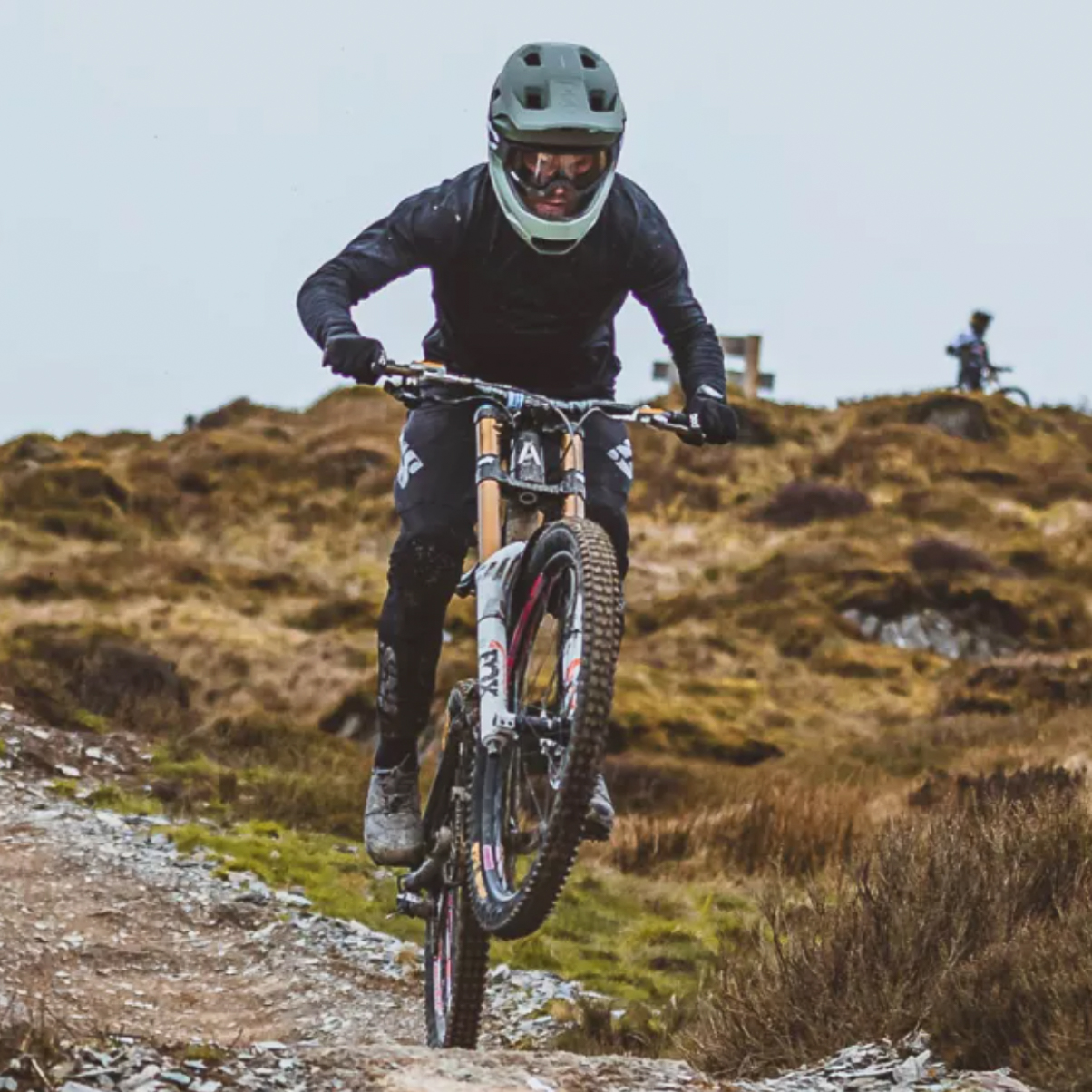
Based in Edinburgh, Graham has some of the best mountain biking and gravel riding in the UK right on his doorstep. With almost 20 years of riding experience, he has been involved in downhill and enduro racing so has plenty of full-face experience.
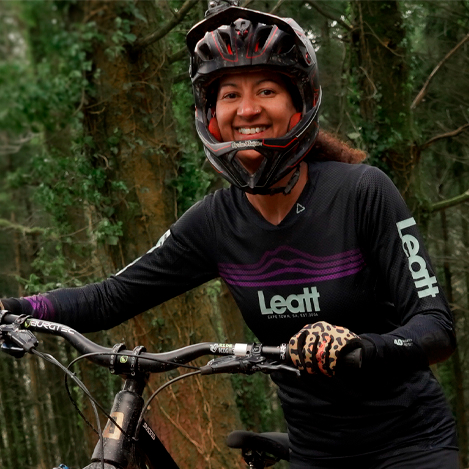
Janine has always had a deep love of bikes which stemmed from BMX and now focuses on MTB. She is happy to attack all kinds of trails but her heart lies with air time on flow and jump lines.
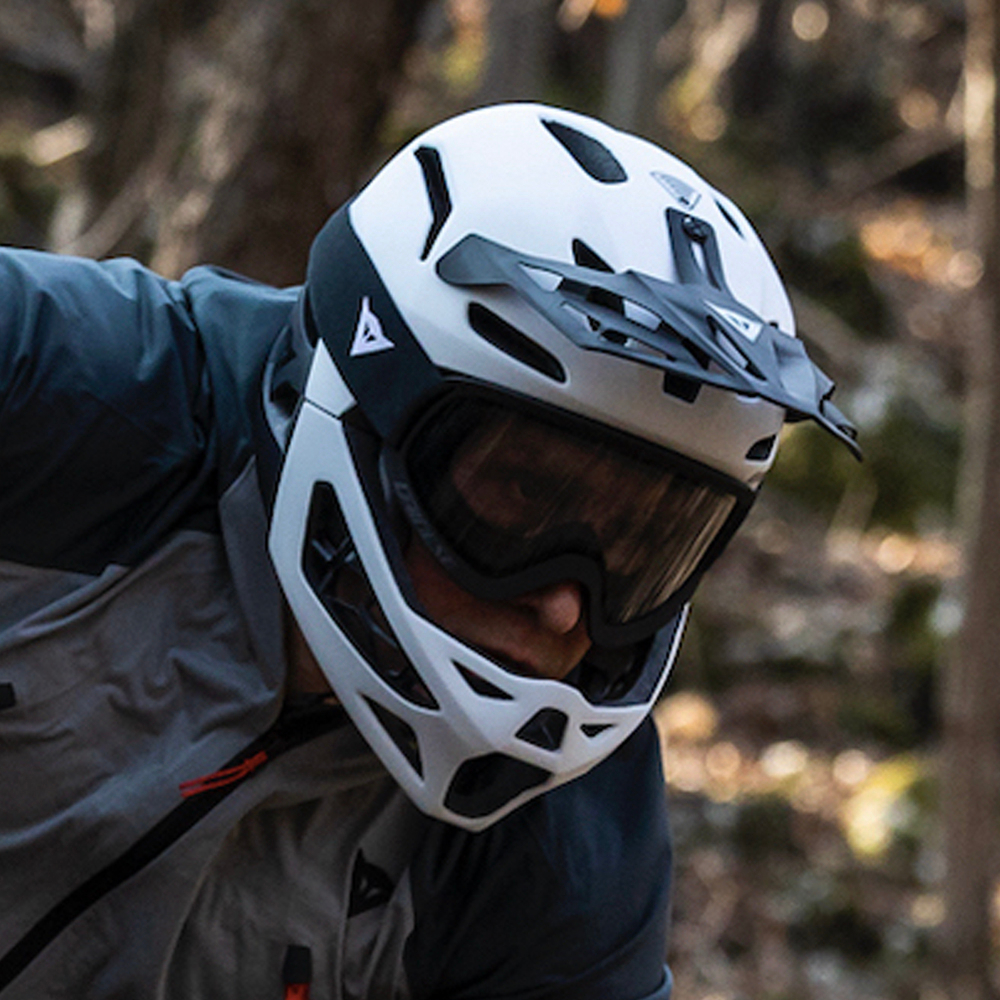
An ex-elite downhill racer Mick has worn a great many full-face helmets in extreme conditions, so knows exactly what works and what doesn't. Nowadays, he's mostly riding enduro-style terrain on conventional and electric bikes.
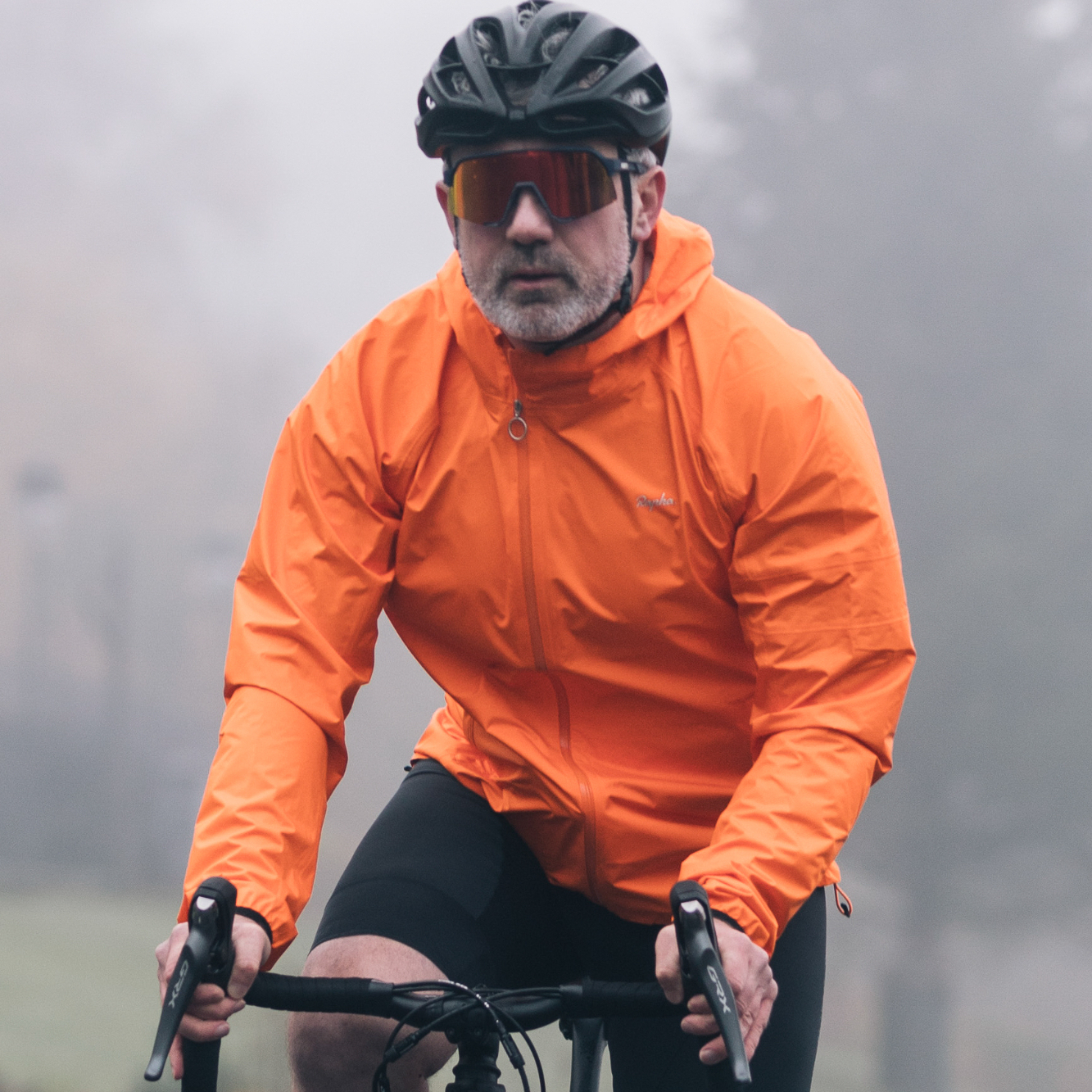
Paul Brett joined BikePerfect as a staff writer in 2022. He has been an avid cyclist for as long as he can remember, initially catching the mountain biking bug in the 1990s, and he raced mountain bikes for over a decade before injury cut short a glittering career. An award-winning photographer, when not riding a bike, he can be found at the side of a cyclocross track or a downhill mountain bike world championship shooting the action. Paul was the founder, editor and writer of Proper Cycling magazine, and he's traveled the world interviewing some of the biggest names in mountain biking and writing about some of the biggest cycling brands.
Current rides: Canyon Inflite, Specialized Diverge, Marin Alpine Trail 2
- Guy KestevenTechnical-Editor-at-Large
- Rich OwenEditor, BikePerfect
- Graham CottinghamSenior reviews writer, Bike Perfect
- Mick KirkmanFreelance writer
